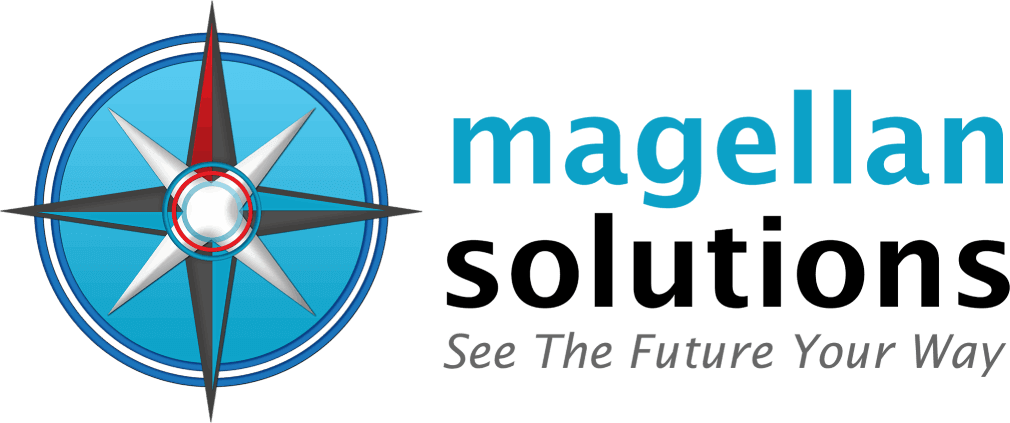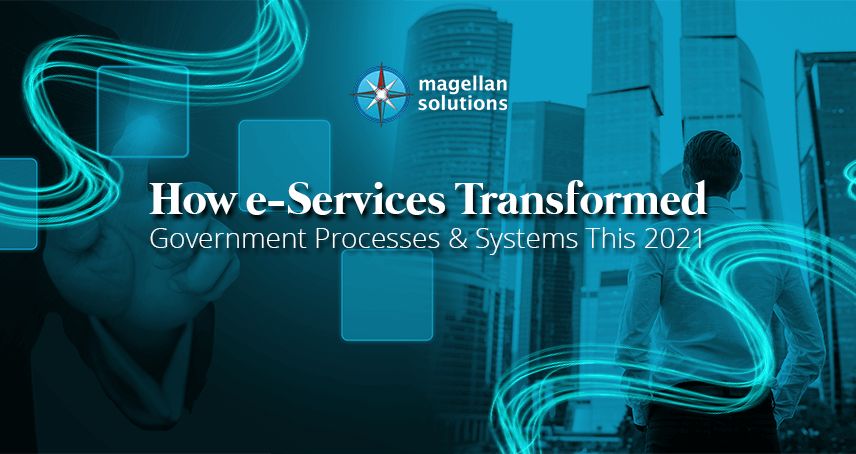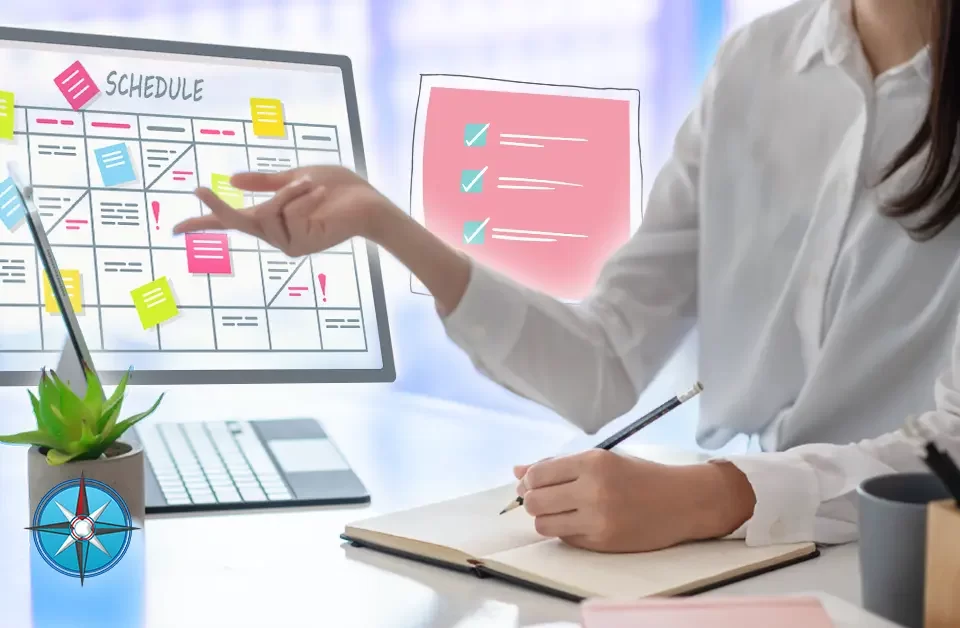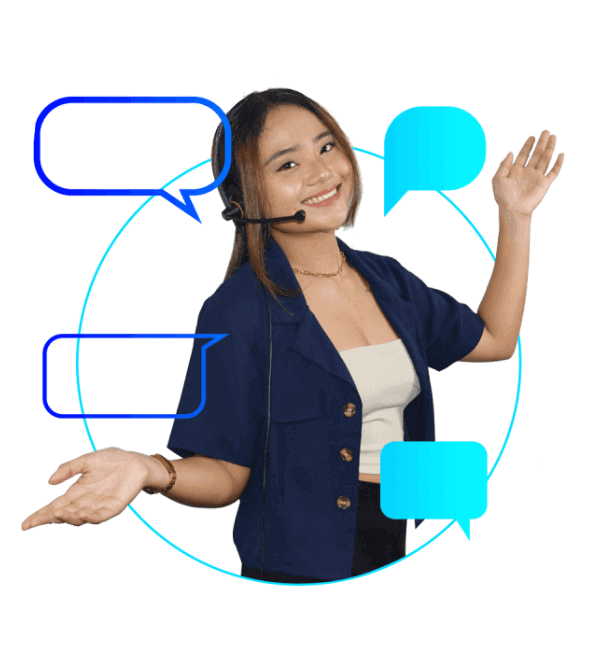Schedule a FREE call with our outsourcing expert now and get a precise quotation that meets your requirements. Don't wait - get started today!
Government Tasks & Why E-services Are Needed For Them
E-service innovations during Covid-19 stemmed from the urgent need to share information about the virus.
Governments and businesses not familiar with communicating a constantly changing message of this magnitude grappled with solutions. They pursued building e-services portals and mobile apps, using social media, and relying on instant messaging. For some, it was the first time venturing into this space. But after some time, it was realized that it is indeed a better way for citizens and the government to communicate effectively.
We listed some of the things that are experiencing challenges and how online e-services were able to provide solutions:
Sharing information
It is vital for governments to provide accurate, useful, and up-to-date information to people. The pandemic has brought new needs for digital government services and more demand for existing services. Developers in governments were mobilized and engaged in designing new apps and services to help in the fight against COVID-19. Some of these new services include delivering food and other essential items to those most in need by optimizing the entire supply chain via digital government e-services account.
There has also been a wave of fake news and viral hoaxes. World Health Organization Organization has categorized this as the second issue of an infodemic. In response, some governments have launched response units or campaigns to coordinate the fight against online misinformation about COVID-19.
Without my e-services, everything passed on from word of mouth would eventually lead to mistranslation. E-services provide consistent and regular updates to counter these.
Engaging people
Online engagement initiatives led by governments can help people cope with the crisis as well as improve government operations. In a crisis situation, it becomes more important than ever to reach out to vulnerable groups in society, respond to their needs, and ensure social stability. Engaging with civil society allows governments to tackle socioeconomic challenges in a more productive way that leaves no one behind.
Many governments have further utilized e-service link platforms to connect with people. Some also have partnered with influencers to disseminate accurate information about the COVID-19 outbreak and to counter harmful misinformation. One reason for getting social influencers on board is that misunderstandings on information mostly start with the youth and children.
With e-services login, partnering up with social media personas is by far, the best solution for this. Social media personas are widely known globally with the platforms aiming for a worldwide audience. Through this, it’s not just one nation but the whole world saved from misunderstandings.
Establishing multi-stakeholder partnerships
Governments often lack the financial and human resource capabilities to develop digital e-services login page tools for their people. Therefore, building partnerships with private technology companies, social entrepreneurs, or other national and international organizations, can help. Governments would be able to make use of existing technologies to meet the needs of people and soften the impact of the crisis on their lives.
For example, the United States Government issued a call for action to key industry stakeholders and artificial intelligence experts to develop new text and data mining techniques. As a result, it helps the scientific community answer high-priority questions related to COVID-19. Furthermore, it can help speed up research and support with guidance on diagnosis, treatment, and management of infected patients globally, including in developing countries that have more limited resources.
The healthcare industries would surely find e-services advantageous in dealing with patient-related tasks.
Here at Magellan Solutions, we are accredited with our HIPAA certification. So you can rest assured that our data gathered from your outsourced e-services would not be leaked to unwanted parties.
Advantages when outsourcing e-services
Public-private partnerships are essential for implementing innovative technologies. But government leadership, strong institutions, and effective public policies are also crucial to personalize an effective digital solution.
The COVID-19 pandemic has emphasized the importance of e-service centers, but also the pivotal role of an effective, inclusive, and accountable government.
E-service companies have become a natural part of governments’ toolboxes. And now they ask, “How this tool can be used to support and enhance broader economic development”
Increasing coherency and integration of the public sector through innovation and change.
Public sectors are quickly becoming more coherent and integrated. Eliminating redundancies and ensuring the sharing of resources will dominate the e-government agenda in 2021 and the coming years. This requires an unprecedented change of mindsets and traditional silo-thinking toward ownership of the public sector as a whole by each civil servant.
Putting users at the steering wheel of the public sector.
Focusing on users and putting them at the center of public sector activities diminishes silo-thinking and increases civil service providers’ awareness of user needs and demands. Online e-service will enable governments to hand over major parts of public sector development and operations to users directly since the competencies and skills of society at large are improving and affecting an increasing number of people. The collaborative involvement of users in service design and operation could allow them to build their own set of public services adapted to their personal needs at different stages of their lives.
Local service delivery that strengthened coordination and management.
Allowing front-line personnel to deliver public services efficiently and effectively requires a well-functioning and fully coherent and integrated back office. An e-services call center enables governments to reprioritize resources, moving more personnel from administrative duties in the back office to front-line duties and helping users directly where necessary. Both local support in the front office and effective coordination and management in the back- office is vital. Building up competencies and skills locally will become imperative. Monitoring and evaluations through the use of relevant measures and indicators will be important coherency tools.
The globalization of public services.
Globalization is affecting all countries’ public sectors. Regional cross-border seamless services are increasingly apparent. This extra pressure for international collaboration and cooperation leads to increased global integration. International collaboration is already underway in the European Union and continues to increase. This makes both shared e-services account such as cross-border electronic identification systems and health care a real possibility.
Accelerating the implementation of innovative digital technologies
Most innovative quick-to-market solutions have stemmed from the private sector. However, the crisis has exposed the need for government leadership in the development and adoption of new technologies such as artificial intelligence (AI) and robotics. This is to ensure the effective provision of public services.
AI-powered technology has proven to be beneficial for the provision of healthcare services.
- People have turned to self-checks for symptoms and accessed “virtual doctors’’ through telemedicine to get medical advice.
- Multilingual chatbots offered solutions for overcoming language barriers, accessing information, and communicating with health practitioners.
- 3D printing technologies have been adopted to produce replacement valves for reanimation devices, and protective medical face shields to address the shortage.
- Robots and drones have been effective in providing security and sanitation thus reducing staff exposure to risk. Governments are also using drones with similar technologies to monitor streets, deliver medical supplies or disinfect public spaces.
- Patrol robots using facial recognition and thermal cameras are deployed at airports and public places to scan crowds and identify potentially infected people.
- Sterilization robots equipped with ultraviolet lights have been helpful to disinfect hospitals and contaminated areas.
- Other robots monitor vital parameters from medical devices or allow patients to communicate remotely with the nurses.
E-Services and the Government Processes & Systems for the US
US government, with the help of my e-services, has become widespread, with numerous, albeit uneven effects. Overall, it has improved efficiency and reduced corruption. More people are better informed about the affairs of the state than ever before and in some cases can make their voices heard. Long, time-wasting trips to government offices are declining.
Life for many has become safer, healthier, cleaner, and more convenient as a result. Digital divides are diminishing everywhere, particularly through smartphones. Rural masses are gradually becoming empowered, as farmers can register land ownership and learn about crop prices. Telehealth and distance education are improving lives.
There is no one-size-fits-all model.
- The managerial model stresses a vertical flow of information from the government to its citizens. This model is concerned with efficiency, especially with the increase in speed when delivering information and services, as well as a reduction of costs. This model establishes a client-type relationship between the government and its citizens.
- The consultative model also stresses vertical information flow but is more concerned with responding to the needs of societal interest as expressed electronically by the citizens. This includes online elections, and other input from voters and requires an enormous amount of citizen involvement.
- The participatory model is the most interactive of the three major models of involvement between government and citizens. Unlike the other two, the participatory model strives for a horizontal and multi-directional flow of information that creates a cyber society that can be more effective for the general public. This model becomes relevant when universal access and widespread usage of the technology have become part of the norm in terms of government-citizen interaction.
Although these three models show some potential ways for citizen and government interaction, there are many benefits with the actual implementation of e-service links and how they can affect people involved in the political process in the United States.
E-government means different things in different countries. Thus it must be understood as simultaneously reflecting national and local economic, political, and cultural contexts.
Contact us for more information. Or fill out the form below for a free quote today!














